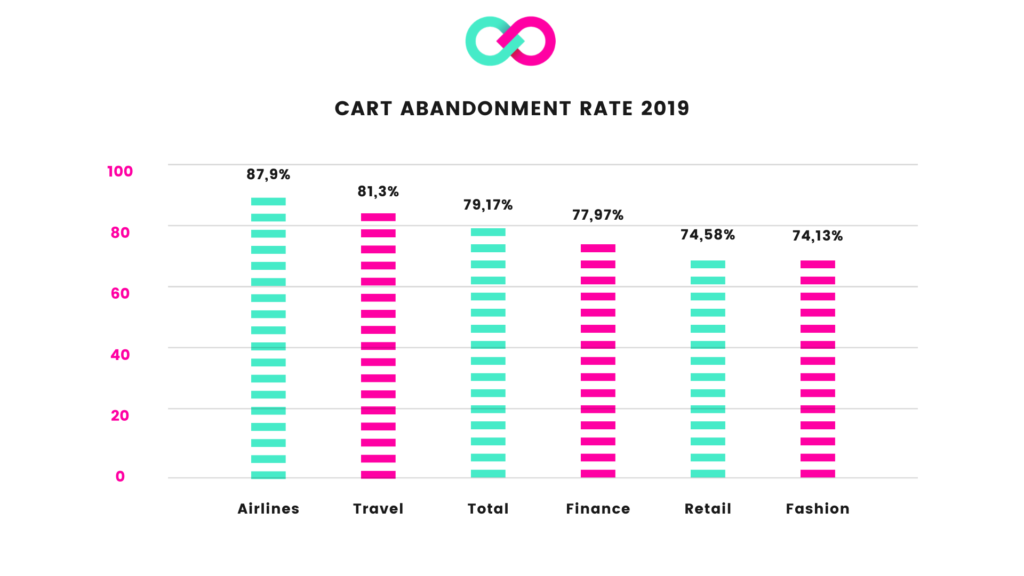Cart Abandonment: how to fix it [Best Practices]
The abandoned cart is a problem for any e-commerce. This event occurs when the customer adds products to the shopping cart, enters his data, but ultimately decides not to buy them. In other words, leaves the cart.
According to a study by Blueknow, 72% of users abandon the cart; They leave the online store without buying. Of all potential customers who leave the shopping cart, only 16% return.
It is important to note that this 16% returns to the online store through an abandoned cart campaign. So knowing the meaning of the abandoned cart of your e-commerce will help you recover that sale.
Today we will talk about how important it is to be able to recover the abandoned cart and explain the best tactics to do so. Go for it.

Table of Contents
The importance of recovering the abandoned cart
Being able to recover the abandoned cart of your e-commerce will help you increase your sales and improve the purchase process. However, in order to recover it, you must know the reasons behind this decision.

Why do customers abandon the shopping cart?
There are several reasons why a user decides to leave the e-commerce shopping cart. For example, he might not find the payment option that interests him or maybe he was just browsing a little.
Another reason why customers can leave your cart is that delivery times are too long.
According to a study conducted by Elogia and IAB Spain, most buyers attach greater importance to the speed of delivery than shipping costs. 30% would be willing to pay more if they were able to receive their order sooner.
So if you improve the delivery offer, fewer users will be likely to leave the cart and the online store without making purchases.

What is the average cart abandonment rate?
As mentioned earlier, the Blueknow study found that 72% of users do not finalize their purchase. They also found that the most affected sector is telephony, where 92% of abandoned carts are reported.
The Blueknow study was conducted analyzing 136 e-commerce sites operating in 26 countries in 2018.
On the other hand, according to a Statista analysis, 79.17% of online shoppers leave the cart without buying. The sectors that are most affected by cart abandonment are airlines and tourism. Fashion, on the other hand, is the sector with the most loyal customers. Only 74% of users left the cart before making the purchase.
These data were collected from 500 international companies throughout 2019.

Source: Statista.com
Knowing the average abandonment rate of your e-commerce will help you improve your sales.
To do this, you just have to divide the total sales that have been made successfully by the total of the transactions initiated but not completed. The result will give you an idea of the percentage of customers who leave the shopping cart in your online store.
How to monitor the cart abandonment rate of your e-commerce?
In order to know the reasons why customers do not complete the purchase, you will need to monitor the users who enter your e-commerce. You must know the exact moment when they abandon the cart.
They could do this when they see the shipping costs, delivery times, during the registration of their data or during the payment process if they do not see any option they like.
Once you have this information, you can analyze it and decide whether to improve the shipping offer, create a simpler registration process or have more payment options.

Examples of how to recover the abandoned cart
Now that you know how to know the average cart abandonment rate of your e-commerce, you can move on to the next step: recovery.

Prevent the increase of the cart abandonment rate
There are different techniques that will help you prevent the e-commerce cart abandonment rate from rising.
One practice that helps customers make the purchase is to incorporate a miniature image of what they are about to purchase. This will keep the article in mind at all times.
You can also incorporate the opinions of other customers on a product. This practice builds trust and helps users know more about what they are going to buy.
Reduce the number of abandoned carts
Another technique that you can apply to increase your sales is to decrease the total shopping carts abandoned in your e-commerce.
Asos
The British brand got 50% of customers to go to the checkout. How? Eliminating the option of having to create an account. Instead, it gave them the opportunity to buy as guests.
Made.com
The UK furniture and household goods design company prevents its customers from leaving the shopping cart with a simple gesture: shipping costs are in plain sight.
Buyers can see what they will pay for shipping while adding products to the cart. This way they don’t get any negative surprises and they are aware of what they have to pay.
Best strategies to recover the abandoned cart
These three online stores managed to recover the abandoned cart and increase their sales. Take note.
Havaianas
Havaianas managed to increase its online sales by 19% through a campaign to recover abandoned carts. The brand decided to send e-mails to customers, an hour after leaving the cart, reminding them of their purchase.
With this simple technique, it managed to remind the customer that the purchase had not been completed.
Adidas
But it’s not worth it just to send an email to buyers. You have to get their attention when you do it. An example of this is Adidas’s abandoned cart email.
Adidas wrote a humorous email asking the customer if his wifi worked. With this question, they manage to capture the customer’s attention and reminds him that he has not finished his purchase.
Amazon
The e-commerce giant managed to reduce the number of abandoned carts in its marketplace by making the cart visible. The customer can see at all times the total items he is going to buy. In other words, it is more difficult to forget his purchase.
As in a physical store, many people enter e-commerce out of curiosity, just to see the products they sell.
Cart Abandonment: how to fix it
Now you know. Preventing users from leaving your e-commerce cart is essential for your online business. But if that happens, you have to be ready to launch a recovery campaign.

As we mentioned earlier, 16% will return through a campaign and finalize the purchase. This results in an 8% increase in the billing of your online store.
Another technique you can perform to recover the abandoned cart is the analysis of your delivery offer. Giving the customer the opportunity to choose between different delivery methods will help you not to lose sales.
In addition, you shouldn’t forget that buyers appreciate the speed of delivery of the order. Prevent your customers from leaving the cart and offer the fast delivery option.
Remember to optimize the payment and shipping process to improve the shopping experience. Use only the right carriers for each order. This way you can make sure that the products arrive on time at their destination.
Finally, keep the customer informed at all times. Whether he left the cart or completed the purchase, use the email to communicate with him.
Now you just have to put all these techniques into practice and start increasing the turnover of your online store.

ShippyPro is the complete shipping software for online and offline retail. With Label Creator, Track & Trace, Easy Return and Analytics features, our software simplifies your shipping operations. ShippyPro integrates with over 180 carriers and 80 sales channels, making it compatible with a wide range of products and use cases.











